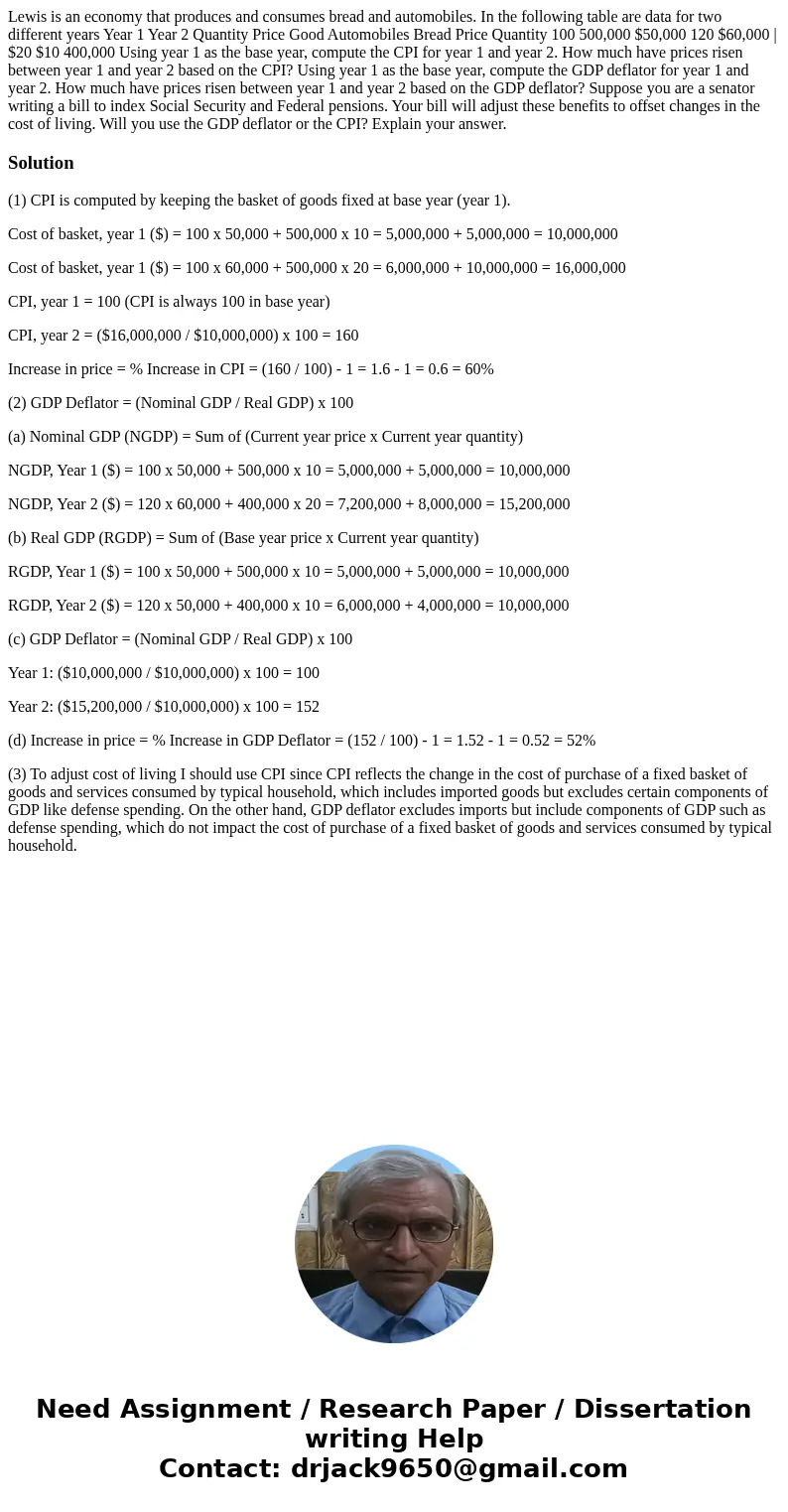Lewis is an economy that produces and consumes bread and aut
Solution
(1) CPI is computed by keeping the basket of goods fixed at base year (year 1).
Cost of basket, year 1 ($) = 100 x 50,000 + 500,000 x 10 = 5,000,000 + 5,000,000 = 10,000,000
Cost of basket, year 1 ($) = 100 x 60,000 + 500,000 x 20 = 6,000,000 + 10,000,000 = 16,000,000
CPI, year 1 = 100 (CPI is always 100 in base year)
CPI, year 2 = ($16,000,000 / $10,000,000) x 100 = 160
Increase in price = % Increase in CPI = (160 / 100) - 1 = 1.6 - 1 = 0.6 = 60%
(2) GDP Deflator = (Nominal GDP / Real GDP) x 100
(a) Nominal GDP (NGDP) = Sum of (Current year price x Current year quantity)
NGDP, Year 1 ($) = 100 x 50,000 + 500,000 x 10 = 5,000,000 + 5,000,000 = 10,000,000
NGDP, Year 2 ($) = 120 x 60,000 + 400,000 x 20 = 7,200,000 + 8,000,000 = 15,200,000
(b) Real GDP (RGDP) = Sum of (Base year price x Current year quantity)
RGDP, Year 1 ($) = 100 x 50,000 + 500,000 x 10 = 5,000,000 + 5,000,000 = 10,000,000
RGDP, Year 2 ($) = 120 x 50,000 + 400,000 x 10 = 6,000,000 + 4,000,000 = 10,000,000
(c) GDP Deflator = (Nominal GDP / Real GDP) x 100
Year 1: ($10,000,000 / $10,000,000) x 100 = 100
Year 2: ($15,200,000 / $10,000,000) x 100 = 152
(d) Increase in price = % Increase in GDP Deflator = (152 / 100) - 1 = 1.52 - 1 = 0.52 = 52%
(3) To adjust cost of living I should use CPI since CPI reflects the change in the cost of purchase of a fixed basket of goods and services consumed by typical household, which includes imported goods but excludes certain components of GDP like defense spending. On the other hand, GDP deflator excludes imports but include components of GDP such as defense spending, which do not impact the cost of purchase of a fixed basket of goods and services consumed by typical household.

 Homework Sourse
Homework Sourse